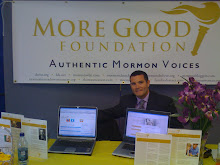“Let There Be Light (and Heat)”
November 10, 2008
Lighting
During our long winter nights, that are 12 to 15 hours long, you need some type of alternate lighting resource. Every family has different needs, so the decision of what to use is quite personal. Experts recommend that each family have several types of lighting options available. There are kerosene lanterns, propane lanterns, hand crank flashlights, candles, flashlights, and many more things to use. You can check out the discount stores and sports stores to find a variety of choices.
Candles
Candles are a very reliable source because they need no other fuel and you can make them if in dire need. You also need to store matches to light candles and lanterns. When you get a lantern, you will need to purchase the fuel supply.
| Candle Lighting | Burn Time Per Inch | Inches Burn Per Hour |
| ½" | 20 minutes | 3" |
| 3/4 | 45 minutes | 1 1/3 " |
| 7/8" | 1 hour | 1" |
| 1" | 1 hour/10 minutes | 8/10" |
A few notes:
Taller candles seem to give more light than shorter ones.
Make sure you have adequate candle holders so they don’t tip or create a fire hazard.
Make sure you have fire extinguisher for any open flame you use.
For 3 hours of light every day you would need:
| Diameter | 1 day | 1 month (30 days) | 1 year |
| ½ " x 4 " | 1 1/4 candle | 37 ½ candles | 447 |
| 3/4"x 4" | 1 candle | 30 candles | 360 |
| 7/8" x 4" | 3/4 candle | 22 ½ candles | 270 |
| 1" x 4" | 2/3 candle | 20 candles | 240 |
Tallow Candles
| ½ " diameter | 6 " high | 3 hours burn time | 3hrs@day=30 candles/mo |
| 1 " diameter | 6 " high | 8 hours burn time | 3hrs@day=11 candles/mo |
| 2 " diameter | 9 " high | 48 hours burn time | 3hrs@day=2 candle/mo |
Trench Candles
One of the easiest and cheapest versions of an emergency candle is the trench candle. It can be used to cook as well as give light. (This is a great FHE activity)
1- Place a narrow strip of cloth or twisted string (for a wick) on edge of 6-10 layers newspapers.
2- Roll the newspaper tightly, leaving about 1 inch of wick extending at each end
3- Tie the roll firmly with string or wire at 2-4 inch intervals.
4- With small knife or saw, cut 1" above every tied place and pull the end sections into cones
5- Melt paraffin in large can or saucepan. Soak candle for about 2 minutes.
6- Place on newspaper to dry. Store in cool place until ready to use.
Flashlights
Flashlights are a great directional light. They don't light up a room very well. The batteries can be expensive to store, unless you can get solar rechargeable ones with a solar re-charger. You can also get hand crank/ solar recharge flashlights that work quite well.
One of the advances in preparedness is the LED (light emitting diode) bulb. These bulbs use space-age technology that allow an incredible life span of thousands of hours and emit a bright light. They do not have a sensitive filament to break and withstand much abuse. Re-chargeable batteries can be recharged with a small solar panel, or from your car 12 volt power supply.
Lanterns
A tip from my many years living without electricity: Kerosene lanterns offer the least expensive, longest lived source of light. They are safer than candles and give off more light, but do need to be watched so as not to knock them over. They do have a bit of a smell, and can smoke if turned too high. Of course you need to store fuel.
| Kerosene lantern | 3/4 cup/day | 6 quarts/per month | 18 gallons/per year |
Propane lanterns are the brightest and cleanest but are more expensive to operate. Good for short term, but may not be as good in the long run. Propane lights work great as long as you can get or afford propane.
We are setting up a combination of solar, wind power at our cabin to provide on demand power for lights, small refrigerator, and TV/DVD. (The essentials of life)
Emergency Heat
The other challenge during power outages is keeping warm. Examples of emergency heating include wood stove, propane heater approved for indoor use i.e. Mr. Buddy, generator and portable electric heater, gas fireplace, etc. Blankets and sleeping bags do wonders in an emergency. Make sure you have a plan in place and get the supplies needed.
Thanks again to
Marcia Lind






No comments:
Post a Comment